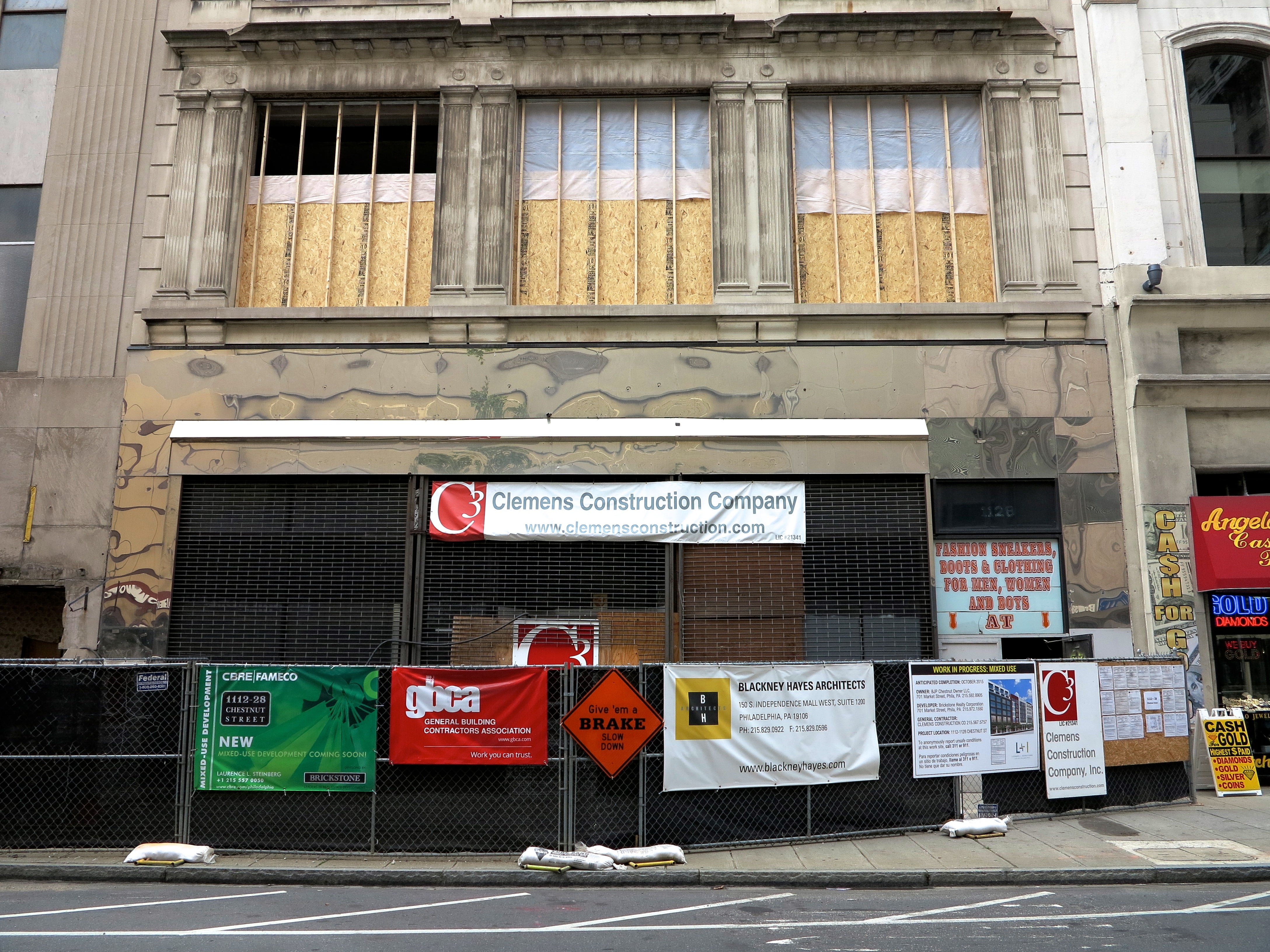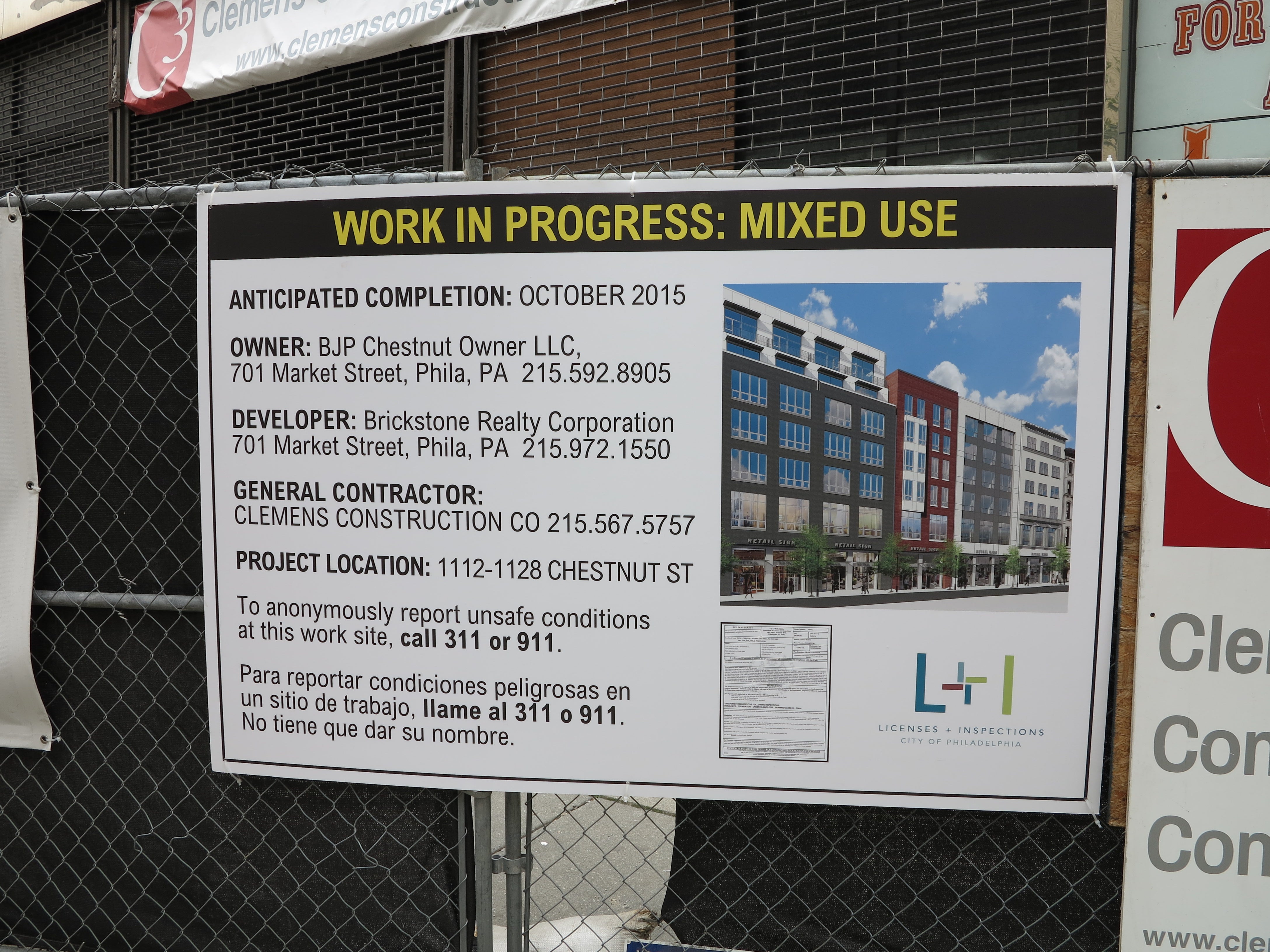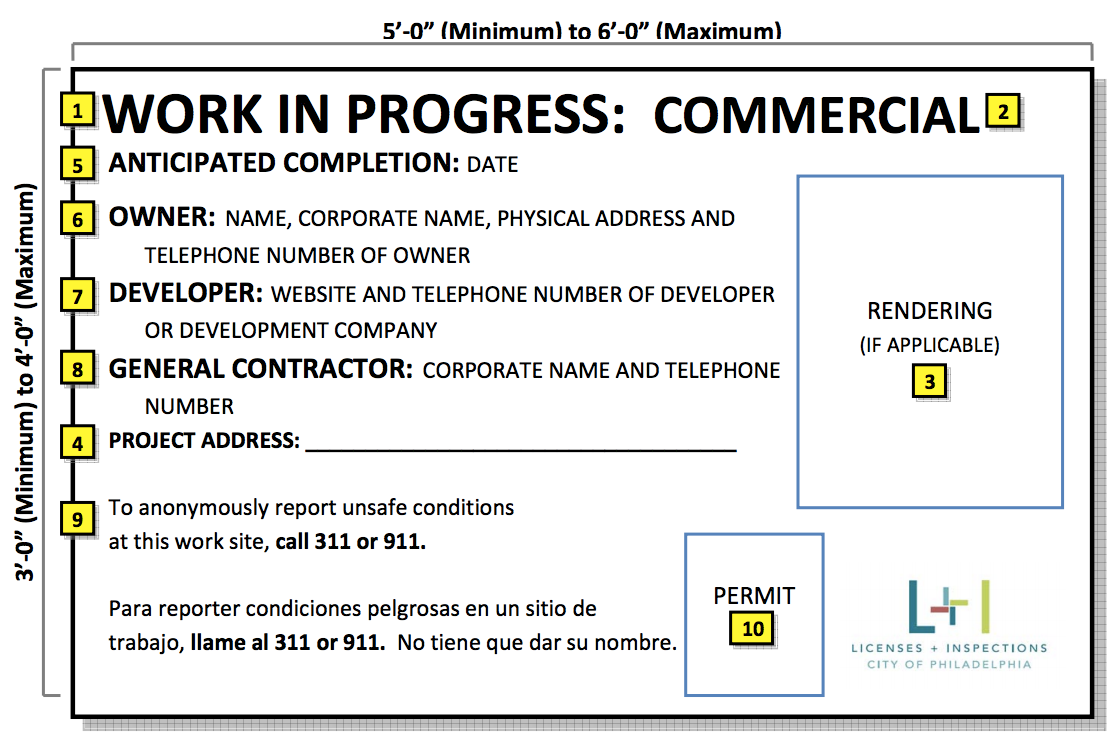Project Information Revelation

Sometimes we’ve got to stop to recognize the small as significant. Today: Project information.
Walking down 12th Street late last week my heart skipped a nerdy beat at Chestnut. Here Brickstone is working to convert several derelict properties back to mixed-use life. That alone is a good sign for a struggling stretch of Chestnut. But that’s not what made me jump on this particular day: On the chain link fence was the first project information sign.
Ziptied to the fence is a big board that explains the basics of what Brickstone is doing: Owner, contractor, type of work, permits, anticipated completion date, and a rendering of what it might look like when its done.
It was as though the sky opened and the better angels of common sense had descended on the Department of Licenses and Inspections with a revelation: Information.
I was perhaps inappropriately excited when I saw the newly required project information sign up at 1112 Chestnut. But it’s a big deal when it comes to public awareness and site safety. Now anyone can see essential project information. Hopefully that will mean less head-scratching by passers by, wondering just what’s being built. Or – and this is really important – if something looks unsafe it’s got all of the information you need to report your concerns to the city.
Clear signage is such a common sense requirement, and yet this kind of info has never been so boldly displayed on Philly projects. Since the fatal demolition-related buidling collapse last June at 22nd and Market, however, the city recognized that it could do more to increase safety and awareness by putting key information at sidewalk level.
We often gripe about open data in the context of digital information access, but this lo-fi and smart solution is probably more useful. This is open government too.

Here’s how the new project signs work:
- Going forward any construction, demolition, addition, or major structural alteration is now required to have a project information sign explaining the work. Projects of different scales have different requirements – smaller signage for smaller scale buildings, big-time visuals for large projects.
- Major projects, like Brickstone’s, are considered the construction or demolition of a building more than three stories tall, covering more than 10,000 square feet of lot space, or with an average roof height of more than 40 feet high. Major projects are also any alterations a building façade, or any demolition above a 3rd story or 40 feet up.
- For major projects expect large info panels – three to four feet high and five to six feet wide – on every street frontage. They must display the type of work, anticipated completion date, owner, developer, contractor, permit, rendering (if available), and information to report unsafe work conditions.
- For non-major construction projects, the signs will be yellow with black text, naming the owner and contractors (with contact information), anticipated completion date, and the property address as listed on the permit. L&I will provide contractors with a blank version of these signs.
- All signs must be up prior to commencing work and remain intact and legible, with current information, throughout the project.
By providing basic information about a project the public is empowered to ask questions of owners or contractors, get valuable information about what to expect when its done, and report activities on site that look questionable or unsafe. If you don’t see a sign up and you see significant work underway, that’s a signal to call 311 and report it – it might be a fly-by-night contractor or someone trying to do major work without the right permits. L&I can’t be and isn’t everywhere. It’s on the public to be the city’s eyes sometimes. These signs will enable more of us to help out.
Project info signs are almost sensible that I can’t believe this hasn’t been the standard. In a way, it’s the least a city can do. But most American cities don’t bother. (New York City has similar project signs, which were used as the model for Philly’s new signs.)
Now if only major projects could get similar info signs detailing proposals and giving notice of important public meetings, we’d be in really good shape.

WHYY is your source for fact-based, in-depth journalism and information. As a nonprofit organization, we rely on financial support from readers like you. Please give today.





